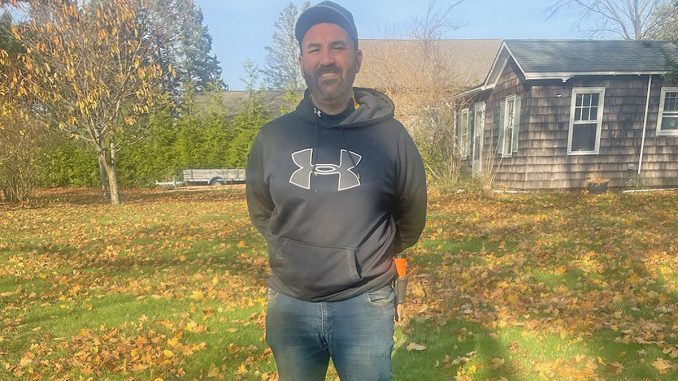
Frank Jurs loves Long Island history. He has read about it, studied it, and craves to learn more. So it was a natural fit for him to buy a metal detector and go looking for history buried in the soil of the North Fork.
And on Sunday, on a farm in Southold, he hit pay dirt. In a few minutes of searching, he found a 1785 Spanish coin called a real minted in Guatemala; a 1902 Barber U.S. quarter minted in Philadelphia; and an 1887 “Indian Head” one-cent coin also minted in Philadelphia.
The landowner, who asked that his name and location not be used in this story, said he was with Mr. Jurs when the discovery was made. “I am amazed this was here all this time,” he said.
The coins were not the only rare pieces of history Mr. Jurs found on the farm on a brisk fall afternoon. He also found Colonial-era buttons — including one that was called a “dandy” button because, he said, it was worn by more established residents — and a 19th-century brass bell used on horsedrawn sleighs. The Spanish coin was minted four years before George Washington was elected America’s first president. How it got from Guatemala to a Southold farm, where it was evidently dropped and lost and found more than 200 years later by Mr. Jurs, is anyone’s guess.
Southold Town historian Amy Folk said that finding a Spanish coin from that era is not that unusual for Southold. As to why the coin was here at all, she said, “Coins from many nations and colonies were found in circulation since there was no official currency,” she said.

Joe Tascarella, the manager of Riverhead Gold and Silver on East Main Street, said, “There was no small coinage available then … We didn’t have a mint until 1793, so anything made of gold or silver was used.
“During the last half of the 1700s, a few colonies here made some coins, but it was not sufficient for the population,” he added. Mr. Jurs, who lives in Wantagh, said he became interested in using a metal detector when he decided to go looking for the history that so fascinated him.
“It’s a love of history and then going out and looking,” he said. “Before I got interested some people found 10 Spanish coins in a part near my house in Wantagh.
“What drew me to the East End was the farming and the commerce that went on in that era,” he said. “The Dutch were in New York before Southold became an English settlement. I looked at farms on maps and reached out to this gentleman.”
“This is strictly a hobby,” he added. “I love history, so whatever I find is priceless to me.”
As for the value of the Spanish coin? “The coin is worn out,” Mr. Jurs said. “It’s not pristine. I would say $30 to $50.”

